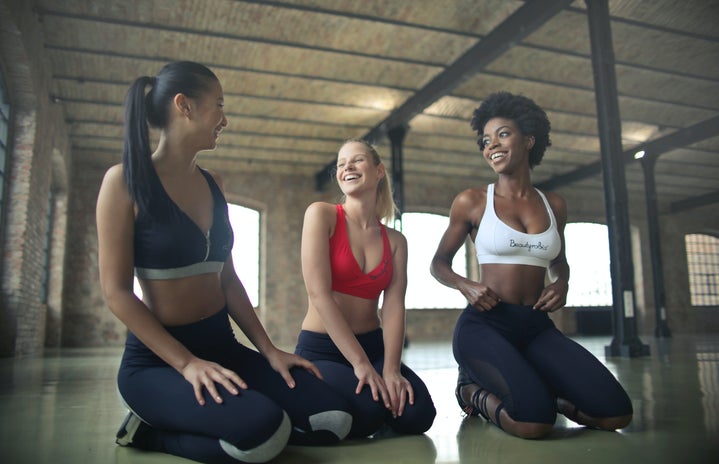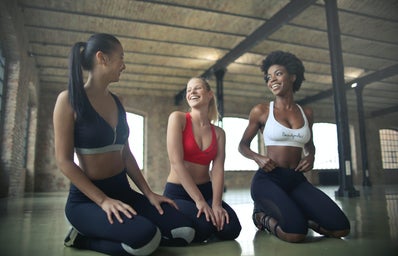Balancing a college work load and an active lifestyle can be a full time job; however, maintaining a solid workout routine is not only beneficial for heath and wellness, but it is also an outlet for stress. Running up endorphin levels and getting outside of your dorm room all help with sanity in college.
At home, it is a lot easier to keep up a regular workout routine. Unfortunately, college gyms are packed full of athletes and students and are limited in equipment.
My dad, a personal trainer for college and professional athletes, has taught me quick and easy workouts for the gym and for workouts that you can complete in your dorm room.
Firstly, limited equipment means you need to be crafty with your routines.
If you have the time to head over to the gym, here is tip number 1:
Grab a few kettle bells, with weight depending on your experience, find a mat, and some space. Don’t be afraid to settle down next to people benching a ton of weight; you’re all at the gym for the same reason, there’s no need to be shy.
Second, always start out with abs. By engaging your abdominal muscles before the start of you’re workout, they will be fired up and ready to remain activated during your entire workout. One of the biggest misconceptions about getting “abs” or a flat stomach is that you only need to focus on crunches and do a two minute plank every day and magically definition will arise. If my dad has taught me anything, it is how invalid this is. You use your abs for everything! They’re working while you squat, and even when you’re working out your upper body.
Here is my go to: Plank on each side, front, one side then the other side, and do this twice for as long as you can hold it. If you are comfortable with planking, you can throw in some knee ups and elbow touches. Then, do 10-20 crunches. Do this circuit twice, and you’re good to go!
Now, if you only have time to workout once or twice a week, it is best to do a full body workout: upper and lower body. But, it is important to not train specific muscle groups more than once within a 48 hour period. This means that if you train legs on Monday, you shouldn’t do another leg workout before Wednesday.
Lets focus on lower body.
A quick circuit goes as such: warm up with some walking side squats. To do this, separate your legs to about shoulder width and squat to about half the depth of a full squat. In this position, take a few steps to the left, and then back to your original place. These squat walks activate your weaker muscles so that your more dominant muscle groups do not take over when you’re working out.
Do these all with or without without kettle bells.
15 squats, 10 static lunges on each leg (one kettle bell or dumbbell in each hand), 15 curtsey lounges, 15 kickbacks on each leg, and 10 fire hydrants on each leg.
Here is the beauty of the workout: it should only take around 15-20 minutes to complete. You can do this circuit anywhere from one to three times. If you feel that one is enough, work your way up!
Another awesome part of this workout is that it doesn’t require any equipment. If you have time constraints, or the weather is stopping you from walking over to the school gym, this workout can be completed right next to your bed, right in your room. If you don’t have weights, just add a few reps to bulk up the difficulty level!
It shouldn’t take more than 30 minutes to get in a good workout. If you have a guide, it’s as simple as just buckling up and doing it.


